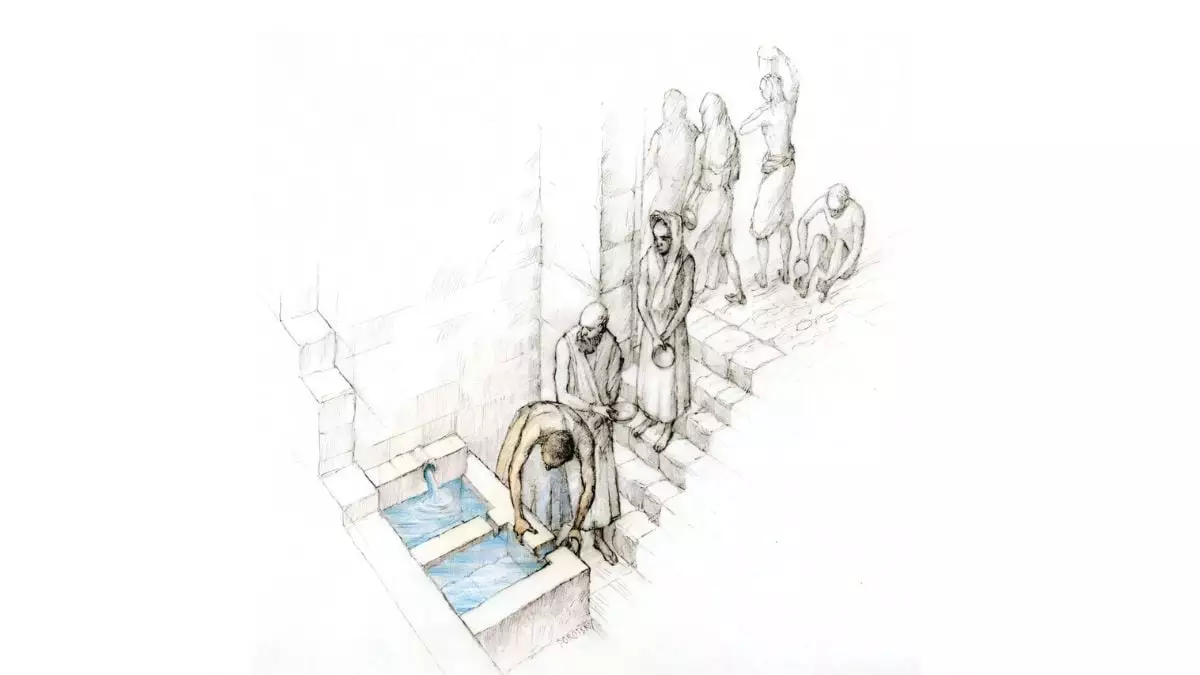Recent archaeological findings in northern Israel have unveiled a captivating aspect of ancient religious practices: ritual cleansing. Within the remains of a sanctuary linked to the Kingdom of Israel, researchers have unearthed a bathhouse designed exclusively for the priestly class. The meticulous construction of two distinct bathing areas—one adorned with yellow plaster intended for dressing and a second with blue plaster and a basin—offers not merely artifacts but an intimate look into the spiritual lives of those long gone. This discovery serves as a powerful testament to the significance of water in religious rituals, deepening our understanding of how sacred purification was interwoven with worship.
The Significance of Water in Rituals
Water has always held a profound role in spiritual rituals across cultures, acting as a medium for purification and renewal. The archaeological evidence from this northern Israeli site reveals that its basin, while not intended for full immersion baths common in other cultures, was instead used for standing washings. The cold spring water, sourced from nearby outlets, commands attention; it is emblematic of a time when such natural elements were integrated into the sacred. Unlike other historical examples where lavish facilities were erected, this bathhouse reflects a more grounded, modest approach to ritual practice, one that resonates with those who find beauty in simplicity.
Continuity in Sacred Spaces
The journey of this sanctuary did not end with its initial destruction by the Seleucids. Instead, it was remarkably reestablished with a new temple, preserving the value placed on cleansing practices. Fast forward two centuries, and the site resurfaces during the Middle to Late Roman period, repurposed for a fresh wave of spiritual seekers. This evolution underscores the enduring relevance of the site, as successive generations recognized its importance. The discovery of evidence indicating the use of primitive clay vessels—used once and discarded—reinforces the notion of ritual purity echoing fervently in biblical traditions.
A Broader Spiritual Magnetism
Dr. Levana Tsfania-Zias’ work emphasizes not just the sanctuary’s local significance; it hints at a broader cultural phenomenon. The digs have revealed imported ceramics and multilingual inscriptions, suggesting that this site acted as a hub for diverse spiritual practices. It beckoned pilgrims from far and wide, transcending regional boundaries. This cosmopolitan character of the sanctuary is a reminder that ancient religious sites were often crossroads of cultural exchange, where varying beliefs and practices coalesced into rich tapestries of spiritual life.
What Lies Beneath
Yet, as spiritually enlightening as these findings are, they only scratch the surface of what remains hidden at Tel Dan. The ambiguity surrounding the identity of deities worshipped at the site and the myriad rituals performed speaks to the need for further exploration. Each layer peeled away could reveal a wealth of knowledge—insights that could reshape our narratives about ancient worship and community interactions in the Near East. The continuing allure of these discoveries ignites curiosity, driving scholars and the general public alike to ponder what ancient rituals might still lie undiscovered, waiting to illuminate our understanding of the past.

Leave a Reply